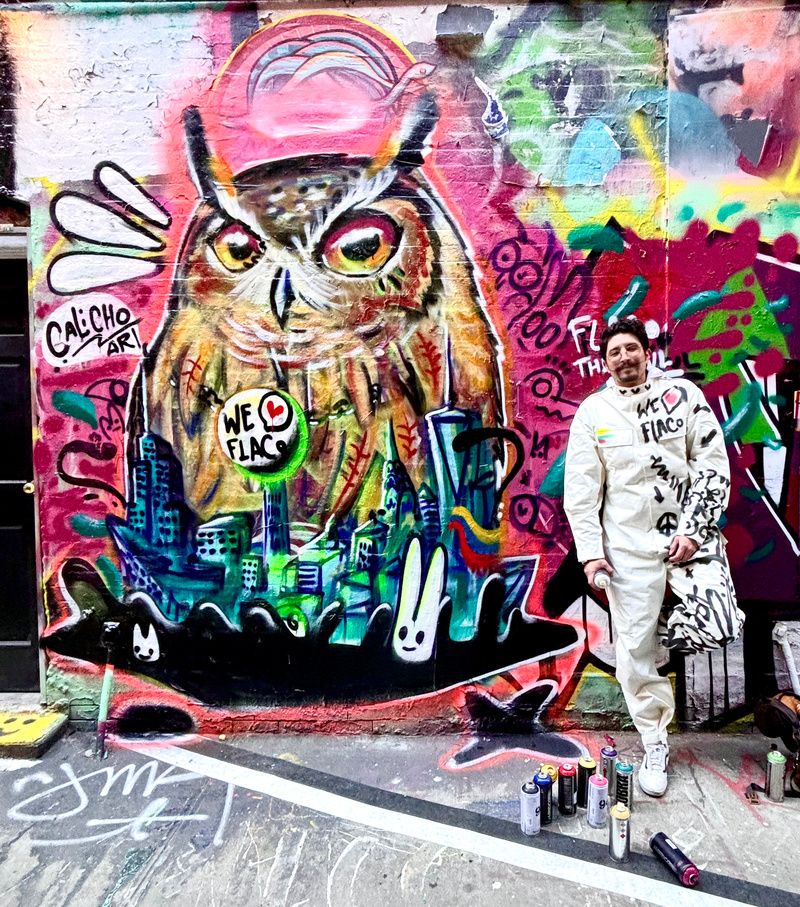Last-Minute NYC Holiday Gift Guide 🎁
We’ve created a holiday gift guide with presents for the intrepid New Yorker that should arrive just in time—


Tributes to Flaco flooded the internet over the weekend after news of the beloved Eurasian eagle owl’s death broke. Flaco gained fame in February 2023 after he was released from his enclosure at the Central Park Zoo by an act of vandalism. Over the past year, New York bird watchers have devotedly tracked his movements and reported sightings of the bird from the Lower East Side of Manhattan to the Upper West Side. Here, we’ve collected some of the most touching tributes to Flaco the owl and tips on how you can help make New York City safer for birds!
“From the time that he was set free to escape the Central Park Zoo and then became emboldened to visit us, humans, in our own enclosures, Flaco captured our hearts, our curiosity, our imaginations, our care, and still our concern,” Lower East Side resident Robin Herbst-Paparne shared with Untapped New York, “The longer he made it, the longer we all counted on him to survive.”
Eurasian eagle owls can expect to live for 20 years in a natural habitat, according to The New York Times. However, in the urban jungle, Flaco faced unique challenges from rat poison to getting hit by a car. Flaco ultimately died after colliding with glass on a building on West 89th Street. Flaco was about to turn 14 years old.
Untapped New York Facebook follower, Samuel, noted the urban challenges Flaco faced in a comment responding to this article:
Although he survived a year free in the city, what was the quality of life for an owl here? Owls are nocturnal, yet Flaco was seen awake and moving during the day. There are questions about the safety of the rats and mice he hunted. Also, he would have never found a mate. Since most birds of prey mate for life, Flacco was probably very lonely. RIP Flaco.
Another Facebook follower, artist Juan Carlos Pinto, shared this portrait of Flaco made out of Metro-Cards!
Herbst-Paparne, who captured the image seen at the top of this page, had a special visit from Flaco in November when the bird perched on an airconditioning unit on her building. “There was, perhaps, something almost magical, like the stuff of childhood fairytales, about the prospect of a visit from this legendary bird. He was, himself, set up to be alone yet he became a powerful force of connection for his human admirers. As he unified us in his life, I think many of us grieve together—both for some of the tragic circumstances of his life and death as well as for the end of our New York City fairytale.”
“In this year of watching Flaco make a life—and, especially, these last few months of seeing him engage with Manhattan in so many different ways—I have thought more deeply about birds than ever before,” said New Yorker Pamela Grossman, “I’ve always respected their right to live and thrive, generally, of course; but Flaco made it all more personal. I will never forget his curiosity, his personality. He was a constant reminder that all creatures can have hopes and dreams. Everyone who loved him has lost a friend.”
A makeshift memorial to Flaco has popped up at the base of his favorite tree in Central Park. Below the branches Flaco once perched on, you can see drawings, cards, stuffed animals, and flowers. One handwritten note reads, “He proved that a lifetime of captivity had not dulled his essential nature. Fly free!” Another poster dubs Flaco a “True New Yorker.”
Artist Calicho Arevalo was among the mourners who flocked to Central Park in recent days. Arevalo has created multiple murals of Flaco the owl throughout Manhattan. The newest mural, pictured below, is in Freeman’s Alley and was completed over the weekend. Arevalo also designed merch featuring Flaco and many of New York City’s iconic landmarks. A percentage of sales from this merch will be donated to an organization dedicated to bird protection.

Many New Yorkers are using Flaco’s death as a call to action. On threads, user linda.c.g.miller noted that this incident shows a need for more bird-safe glass on New York City structures. Manhattan Borough President Mark D. Levine echoed the sentiment, posting on Threads, “The death of Flaco makes it clear: We have to do more to upgrade existing buildings in NYC so that they have bird-friendly facades. Decals on windows and railings, lights off at night in unused rooms, etc.” Gothamist reports that glass collisions kill an estimated 250,000 birds in New York City every year.
The Wild Bird Fund offered some practical tips that anyone can take to help prevent glass collisions. The rehabilitation and education center advises New Yorkers to “Turn off unnecessary lights at night and apply markings to the outside of problem windows. If you live or work in a building that regularly kills birds, please say something! Talk to the management. There are many proven solutions.” Taking these steps can help the birds of New York City fly free!
Flaco the owl isn’t the only bird known to have captured the hearts of New Yorkers. There are the peacocks who retired from St. John the Divine, the snowy owl who made a dramatic appearance in Central Park, and who could forget the hot duck? Check out more of NYC’s famous animals here!
Subscribe to our newsletter